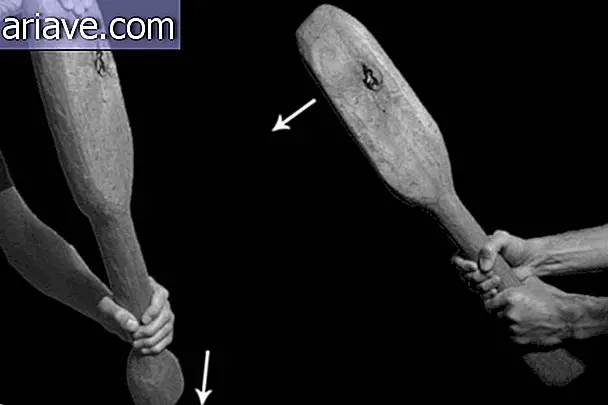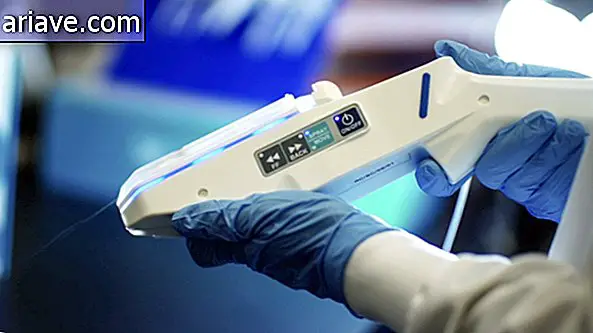Scientist announces that head transplants could occur in two years
Although head transplantation is an idea that seems to have come out of science fiction books - or the classic "Frankenstein" - it is not from today that scientists have been thinking about how to make this procedure a reality. By the way, don't think there were no attempts to perform the surgery: the first relatively successful head transplant occurred in the 1970s in Ohio, USA, and was done by a team led by Robert White.
At the time, the surgeons were able to transplant a monkey's head into another's body, and although doctors did not attempt to interconnect the marrow of the two animals - meaning that the transplanted pet could not move - the monkey remained alive for a while. nine days, until the donor's body's immune system rejected the new head.
Modern Frankenstein

As we revealed some time ago in a story here at Mega Curioso - which you can access via this link - an Italian neuroscientist named Sergio Canavero went public to explain that human head transplants could be successfully performed soon.
But don't think that Canavero's intention is to conduct sinister experiments worthy of mad scientists. His proposal is, in fact, to offer an alternative to people with degenerative or disillusioned diseases due to cancer, for example, so that they can have their lives extended after having their heads transplanted into healthy bodies.
After that, more than two years have passed, and Canavero has spoken again, ensuring that surgery can take place in 2017. Incidentally, according to Helen Thomson of New Scientist, the first trial attempt should take place later this year during a major surgery congress to be held in the US.
Past Challenges

According to Helen, although there have not been many experimental transplants since what was conducted by White's team, Canavero explained that since then many of the surgical procedures and technical aspects related to this type of operation have progressed a lot.
One of the biggest challenges with this type of procedure - without considering the ethical implications of “nailing” a head to a headless body - was the issue of rejection, a common concern in all transplants, and spinal cord fusion.
But how?

Canavero recently published the protocol that should be followed during surgery, and as he explained, the procedure will involve cooling both the donor's head and body so that it can extend the time cells will remain alive without oxygen. Surgeons should then dissect the tissues around the neck of both the donor and recipient, and arteries and large vessels will be interconnected by small tubes.
The next step involves sectioning the marrow - which, after being cut, looks like a packet of spaghetti - and positioning the head of the recipient on the donor body. To fuse the marrow, Canavero is betting on the use of a substance called polyethylene glycol, which should be applied repeatedly for several hours after the procedure.

Helen says polyethylene glycol makes cell membrane fat “sticky” - just as hot water makes raw spaghetti sticky after cooking. The use of this material has been successfully tested on animals, and Canavero intends to start experiments with brain-dead patients to prove its effectiveness in humans.
Finally, surgeons must interconnect muscles and blood vessels, and once surgery is completed, the patient will be kept in a coma for a period of 3 to 4 weeks to prevent him from moving. During this time, the transplanted will have some electrodes implanted in his body to stimulate the spinal cord through electrical discharges and thus strengthen the new nerve connections.
According to Canavero, after this period of coma and electrical stimulation, patients will be able to wake up, feel their faces and even communicate with the same voice they had before the transplant. In addition, the neuroscientist believes that physical therapy will allow transplant recipients to regain movement and walk again within a year.
Alternatives

If the use of polyethylene glycol does not work, Canavero may introduce into the spinal cord stem cells or a class of self-healing olfactory cells that connect the nasal mucosa to the brain. Another option would be to insert stomach membranes to promote fusion - remembering that both techniques showed promising results in several experiments.
Regarding the risk of rejection, much has progressed since the attempt by Robert White - and his monkey, whose body rejected the new head - and experts believe that this problem can now easily be avoided with medication.
It will be?

Of course, with such a scenario, several people have already volunteered to undergo surgery. On the other hand, according to Helen, several experts have argued that there is no evidence that the technique proposed by Canavero will actually allow transplant recipients to have sensitivity in their new bodies or to show movement again.
Another problem that Canavero will have to face will be to find a country that allows this type of procedure to be performed. Also, the issue of using the body of a donor who will receive a head involves a huge ethical discussion. After all, who guarantees that in future the procedure will not be used for aesthetic reasons or that an individual opts for a new body simply to replace his or her old one?
Split Opinions

According to Helen, just as there are advocates of the enterprise - who think that science and humanity can only gain from something so great - there are those who think that, although the proposal is ambitious, surgery can only be performed with success in the future. However, many critics simply do not believe that a head transplant can be performed and that the results will never be expected.
However, despite divided opinions, Canavero will present his proposal during the congress and, he said, if the procedure is not well accepted, he will shelter the bill. However, the expert warns that even if the transplant is not approved - to be performed in the US or Europe, for example - it does not mean that the procedure will not be conducted elsewhere in the world. It's only a matter of time.











